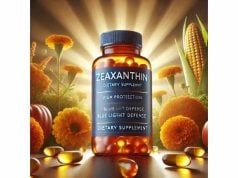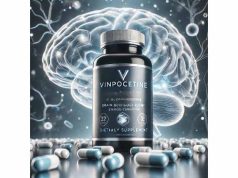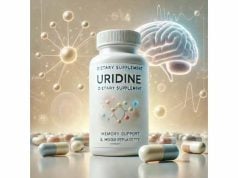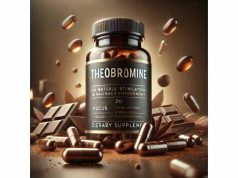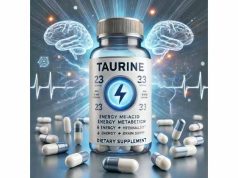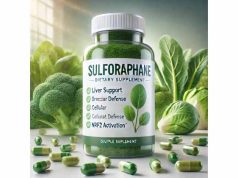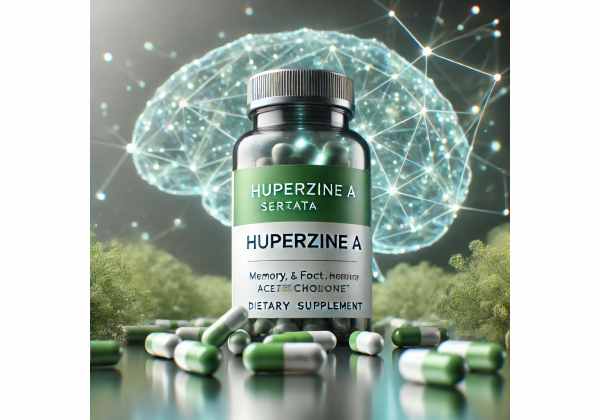
Huperzine A, a natural compound extracted from the Chinese club moss (Huperzia serrata), is increasingly recognized for its capacity to fortify memory, support healthy cognition, and possibly ease certain mental health concerns. By influencing neurotransmitter balance and protecting neurons from age-related or stress-induced damage, Huperzine A has attracted attention among nootropic enthusiasts and researchers alike. Early evidence highlights how this unique alkaloid might sharpen focus, reduce forgetfulness, and contribute to emotional stability. If you’re aiming to strengthen your mental edge, adapt to everyday stressors, or address mild cognitive challenges, Huperzine A stands out as a promising supplement deserving deeper exploration.
Table of Contents
- What is Huperzine A? Basic Composition and Origin
- How Huperzine A Strengthens Mental Clarity and Brain Conditions
- Important Gains of Huperzine A for Psychiatric Well-Being
- Best Practices for Incorporating Huperzine A into Your Routine
- Scientific Evidence and Investigations on Huperzine A
- Frequently Asked Questions about Huperzine A
- References and Sources
What is Huperzine A? Basic Composition and Origin
Huperzine A is a naturally derived sesquiterpene alkaloid best recognized for its involvement in enhancing cognitive function. Primarily extracted from the Chinese club moss, Huperzia serrata, it has a long history in traditional Chinese medicine for supporting mind and memory. Modern scientists have focused on its capacity to affect acetylcholine—a neurotransmitter involved in memory formation and learning processes. This makes Huperzine A uniquely positioned among natural nootropics as an agent that can potentially slow the breakdown of this critical brain chemical.
Traditional Roots and Present-Day Appeal
- Chinese Herbal Tradition: Indigenous peoples in East Asia employed Huperzine A–rich plants to alleviate fevers, inflammation, and certain neuro-related ailments.
- Transition to Modern Nootropic: Today, Huperzine A garners attention for its potential role in staving off cognitive decline, improving memory retention, and mitigating symptoms of various psychiatric conditions—particularly those linked with neurotransmitter imbalances.
Chemical Insight
Huperzine A’s defining feature is its function as a reversible inhibitor of acetylcholinesterase (AChE)—the enzyme that breaks down acetylcholine. By slowing the breakdown of this neurotransmitter, Huperzine A effectively heightens acetylcholine availability in synapses, potentially bolstering memory encoding, alertness, and executive functioning.
Comparison with Other Natural Brain-Boosters
In the broader nootropic sphere, Huperzine A is often contrasted with compounds such as vinpocetine, galantamine, or Bacopa monnieri. While each of these may amplify cognitive processes, Huperzine A’s direct inhibition of acetylcholinesterase sets it apart—mirroring the mechanism of certain prescription cognition-enhancing medications. Its unique method offers an alternative for those seeking a more natural route to maintain or enhance mental capabilities.
Legal Standing and Accessibility
Huperzine A is generally sold as a dietary supplement in many regions, though usage recommendations and potency can vary widely by brand. Some countries regulate the ingredient more tightly than others, owing to concerns over potent cholinergic effects. Selecting products from reputable manufacturers ensures accurate dosing and minimal contamination.
This foundational overview sets the stage for understanding how Huperzine A can reinforce mental resilience and mitigate brain-related disorders. Next, we delve deeper into the nuanced ways it impacts brain chemistry and psychological health.
How Huperzine A Strengthens Mental Clarity and Brain Conditions
The promise of Huperzine A for mental and brain health isn’t just folklore—its biochemical properties offer plausible mechanisms for sharpening focus, augmenting memory, and potentially attenuating symptoms of cognitive decline. Here, we dissect the ways Huperzine A exerts its influence on the brain.
1. Inhibition of Acetylcholinesterase
Acetylcholine is pivotal for learning, recall, and attention. An enzyme called acetylcholinesterase degrades this neurotransmitter, limiting its beneficial impact on neuronal communication. By selectively inhibiting acetylcholinesterase, Huperzine A extends acetylcholine’s presence in the synaptic cleft, fostering a more robust environment for cognitive tasks. This can translate into:
- Better short-term memory recall.
- Enhanced capacity to focus on complex tasks.
- Sharper mental agility in multitasking scenarios.
2. Neuroprotection and Oxidative Defense
Emerging studies indicate that Huperzine A might also exhibit neuroprotective properties beyond acetylcholine modulation. Oxidative stress, a key contributor to brain aging, can be mitigated by certain antioxidants. Huperzine A may help buffer free radicals or stabilize neuronal cell membranes, safeguarding delicate tissues from damage that can compromise cognition over time.
3. Regulation of NMDA Receptor Activity
The N-methyl-D-aspartate (NMDA) receptor is essential for synaptic plasticity and memory consolidation, but excessive activation can lead to excitotoxicity. Preliminary research suggests that Huperzine A can modulate NMDA receptor function, preventing overstimulation. Balancing these receptors may help stabilize mood, learning capacity, and resilience to stress, all crucial for a well-functioning mind.
4. Supporting Cerebral Blood Flow
Though not as pronounced as certain vasodilatory herbs (such as Ginkgo biloba), Huperzine A could indirectly support improved circulation by preserving acetylcholine. This improved flow ensures that the brain receives ample oxygen and nutrients, facilitating sustained mental output. Over time, consistent blood supply can also foster improved nerve growth factor (NGF) signaling, beneficial for neurogenesis and synaptic remodeling.
5. Potential Impact on Amyloid Plaque Formation
Amyloid beta proteins, notorious for their role in Alzheimer’s disease, may be modulated through cholinergic pathways. While definitive proof remains incomplete, some data suggests that Huperzine A could hinder amyloid plaque deposition. This interplay offers hope in the context of long-term brain preservation and might represent a valuable angle for conditions involving protein misfolding or plaque buildup.
6. Alleviating Inflammation in Neural Tissues
Chronic inflammation can degrade neuronal integrity, expedite cognitive decline, and exacerbate mood disorders. Huperzine A’s indirect influence on immune signaling or cytokine levels might lessen these inflammatory processes. By contributing to a healthy inflammatory balance, the supplement paves the way for improved mental function and emotional regulation.
7. Reinforcing Sleep-Wake Patterns
While Huperzine A isn’t overtly sedating, stable neurotransmitter dynamics often contribute to better sleep architecture. Healthier cholinergic function can benefit REM sleep and memory consolidation, enabling deeper rest. Individuals struggling with mild insomnia or frequent awakenings sometimes report improved night-time patterns, possibly due to a more balanced neurochemistry.
8. Integration with Other Neurotransmitters
Acetylcholine isn’t the sole neurotransmitter involved in mental acuity—serotonin, dopamine, GABA, and more shape our mental landscape. By regulating one aspect of the neural puzzle (acetylcholine breakdown), Huperzine A allows other neurotransmitter pathways to function more cohesively. This synergy may further explain anecdotal accounts of not only improved memory but also mild mood elevation or decreased anxious rumination.
In essence, Huperzine A’s presence in the brain fosters a sharper, more resilient mental foundation. Whether through direct enzymatic inhibition or secondary neuroprotective functions, it helps ensure the mind remains agile and less susceptible to age- or stress-related wear.
Important Gains of Huperzine A for Psychiatric Well-Being
Huperzine A is not solely about memorization and alertness—its neurochemical effects hold promise for various mental health contexts, from mild anxiety to degenerative disorders. Although it doesn’t replace comprehensive mental health care or standard psychiatric treatments, an array of potential benefits merits attention.
1. Helping with Mild Cognitive Impairment (MCI)
MCI sits on the spectrum between normal age-related changes and pronounced cognitive decline, such as dementia. Preliminary research indicates that Huperzine A might slow progression or lessen certain MCI symptoms, allowing individuals to maintain independence and everyday functioning. Its emphasis on acetylcholine preservation is believed to be key in propping up memory retrieval and executive skills.
2. Complementary Support in Alzheimer’s Disease
Though far from a definitive cure, Huperzine A has been investigated in conjunction with conventional medications (like donepezil) for Alzheimer’s management. Some clinical data shows measurable improvements in memory tests, language function, and general cognitive performance, potentially due to synergy in cholinergic pathways. Patients or caregivers seeking integrative solutions sometimes consider Huperzine A for additional symptomatic relief under physician guidance.
3. Potential Aid for Age-Related Memory Decline
Even without formal diagnoses, older adults often experience subtle memory lapses or a general slowdown in mental agility. Huperzine A’s mechanism may help these individuals remain sharper, more engaged, and better able to cope with daily cognitive tasks—like problem-solving or remembering appointments. This mild uplifting effect can in turn improve self-esteem and reduce the frustration commonly accompanying forgetfulness.
4. Enhancing Focus and Attention in ADHD
Attention-deficit/hyperactivity disorder (ADHD) revolves around dysregulated neurotransmitter circuits, especially in prefrontal brain regions. Although more research is needed, Huperzine A’s ability to elevate acetylcholine might provide a complementary means of stabilizing focus. Some anecdotal accounts mention heightened concentration, though outcomes vary considerably between individuals.
5. Mitigating Stress and Emotional Lability
Emotional shifts can arise when the brain’s chemical messaging is out of balance. By supporting stable cholinergic function, Huperzine A might help moderate stress responses. In turn, individuals grappling with heightened anxiety or mood swings could find their baseline emotional state smoother, though severe disorders require multi-pronged treatment and professional supervision.
6. Potential for Schizophrenia Symptom Support
In certain psychotic conditions, deficits in memory, attention, and overall cognitive function hinder daily living. A few smaller-scale studies have evaluated Huperzine A’s effects on cognitive symptoms in schizophrenia, noting mild improvements. Further trials could illuminate whether the supplement can systematically address these challenges, especially when combined with antipsychotic regimens.
7. Boosting Motivation and Mental Energy
Fatigue, lack of motivation, or “brain fog” can hamper life satisfaction, even outside of clinically diagnosed mood conditions. Because Huperzine A fosters more robust neural communication, individuals may discover a revitalized sense of drive. This can be particularly beneficial in cyclical low-energy states linked to mild depression or extended stress periods.
8. Protection Against Neurological Deterioration
Though some neurodegenerative ailments have genetic or environmental factors that exceed simple cholinergic adjustments, Huperzine A may serve as one piece of the preventative puzzle. Maintaining robust acetylcholine levels can sustain neural plasticity, reduce vulnerability to oxidative stress, and preserve cognitive capacity. For those with a family history of dementia or other conditions, employing Huperzine A in early or preventive strategies might be worthwhile.
Collectively, these areas underscore Huperzine A’s potential role in various psychiatric or cognitive contexts. While not a panacea, its multi-directional approach—covering enzyme inhibition, neuroprotection, and possible synergy with other interventions—makes it a compelling supplement for mental health pursuits.
Best Practices for Incorporating Huperzine A into Your Routine
Properly harnessing Huperzine A’s potential requires a thoughtful approach to dosage, product sourcing, and lifestyle habits that sustain mental health. This section provides practical tips on how to seamlessly introduce Huperzine A into your regimen while minimizing risks.
1. Selecting a Trustworthy Supplement
As with any dietary product, not all Huperzine A supplements are created equal. Ensure you:
- Check Standardization: Aim for products that list the precise Huperzine A content (often measured in micrograms, mcg).
- Review Lab Testing: Seek out transparent companies with third-party verification, guaranteeing purity and authenticity.
- Identify Additional Ingredients: Some formulations combine Huperzine A with other nootropics; read labels carefully to avoid overlapping effects or interactions.
2. Determining an Effective Dose
Huperzine A is potent in small quantities. Typical daily doses range from 50 mcg up to 200 mcg, though certain therapeutic protocols for specific conditions have used slightly higher amounts under professional oversight. Beginners often start at the lower end (e.g., 50–100 mcg) and adjust upward while monitoring cognitive shifts and any side effects.
3. Timing Matters
The half-life of Huperzine A can be relatively prolonged—some estimate around 10–14 hours—so once-daily or twice-daily dosing is common. Because of its stimulating properties:
- Morning Intake: Taking Huperzine A after breakfast can provide enhanced concentration throughout the work or school day.
- Avoid Late Evening: Too close to bedtime, the heightened alertness might disrupt sleep. If nighttime usage is necessary, keep the dose minimal and confirm that it doesn’t affect rest.
4. Cycling to Prevent Tolerance
Prolonged daily usage of Huperzine A may lead to receptor downregulation or reduced efficacy. Many experts suggest “cycling,” where you alternate weeks or months on the supplement with periodic breaks. For instance, use it continuously for four to six weeks, then pause for a week or two. Such breaks help maintain sensitivity and reduce the possibility of side effects.
5. Pairing Huperzine A with Supportive Nutrients
The synergy approach can magnify mental benefits:
- Choline Sources: Combine with alpha GPC or citicoline to provide the raw material for acetylcholine production, complementing Huperzine A’s cholinesterase inhibition.
- Antioxidants: Substances like vitamin E, vitamin C, or alpha-lipoic acid might reinforce Huperzine A’s mild neuroprotective edge by combating oxidative stress.
- Adaptogens: Bacopa monnieri, ashwagandha, or Rhodiola rosea could buffer stress hormones, forging a multi-layered approach to mental wellness.
6. Recognizing Potential Side Effects
Though widely touted as safe at standard doses, Huperzine A can yield undesired effects if dosage is excessive or interactions arise:
- Cholinergic Overload: Symptoms like nausea, muscle cramps, or excessive salivation can occur if acetylcholine surges unregulated.
- Insomnia or Restlessness: Overstimulation may hinder sleep if taken too late or in high amounts.
- Headaches or Dizziness: Sometimes, abrupt changes in brain chemistry produce transient headaches. Adjust dosage or timing to mitigate these issues.
7. Contradictions and Cautions
Individuals dealing with the following conditions or factors should seek medical advice before trying Huperzine A:
- Bradycardia or Heart Rhythm Issues: High acetylcholine can slow heart rate, heightening potential risk.
- Pregnancy or Breastfeeding: Limited data exist on its safety for mothers and fetuses/infants.
- Concurrent Alzheimer’s Medications: Because they also modulate acetylcholine, combining them with Huperzine A can amplify side effects.
8. Observing Results and Adjusting
Tracking your reaction over several weeks is vital. Keep a simple journal documenting memory changes, focus, mood, and sleep quality. Reassess whether your initial goals—like clearer thinking or diminished cognitive fatigue—are materializing, then tweak your approach or talk with a healthcare practitioner if progress stalls. This iterative process ensures that Huperzine A remains purposeful and aligned with your evolving mental health journey.
By blending mindful selection, moderate dosage, strategic timing, and synergy with complementary nutrients, you can optimize Huperzine A’s capacity to sharpen cognition, stabilize emotions, and support overall neurological resilience.
Scientific Evidence and Investigations on Huperzine A
Although Huperzine A is a relative newcomer to Western supplement markets, a variety of studies—both in China and worldwide—explore its effects on cognition, neurodegenerative conditions, and mental clarity. This section highlights key findings from clinical trials, observational studies, and emerging research avenues.
1. Alzheimer’s Disease and Dementia Trials
Among the more established Huperzine A investigations are those focusing on dementia, especially Alzheimer’s disease. Multiple randomized, placebo-controlled studies in China have observed:
- Improved Cognitive Scores: Participants using Huperzine A often demonstrate measurable enhancements in standardized memory or orientation tests compared to placebo groups.
- Alleviation of Behavioral Issues: Some trials note moderate mitigation of irritability or apathy, likely through stabilized cholinergic pathways.
While these findings are promising, critics point out that numerous trials are relatively short (often 8–12 weeks) or limited by smaller sample sizes. Larger, long-term Western trials are needed to confirm consistent results across diverse populations.
2. Mild Cognitive Impairment (MCI) Research
MCI, a transitional stage between healthy cognition and dementia, has prompted an uptick in Huperzine A–related experiments. Preliminary data suggests that those with MCI might see subtle but meaningful improvements in memory recall and daily task management after consistent supplementation. Though some differences only approach statistical significance, the low side-effect profile of Huperzine A encourages further exploration.
3. Mechanistic Studies in Animal Models
Rodent experiments offer deeper insight into how Huperzine A exerts neuroprotective functions:
- Beta-Amyloid Plaque Reduction: Certain mouse models exhibit fewer amyloid deposits—a hallmark of Alzheimer’s—when given Huperzine A.
- Synaptic Density Support: Observations show potential preservation of synaptic proteins, indicating improved connectivity in learning and memory–centric brain regions.
- Reduced Oxidative Stress: Markers of free radical damage often drop, hinting at a wide-reaching protective effect beyond mere enzyme inhibition.
4. Trials on Healthy Adults and Students
Beyond the realm of clinical diagnoses, smaller studies have tested Huperzine A’s ability to sharpen mental performance in healthy individuals—such as college students or working professionals. Results vary, yet some show short-term enhancements in test-taking performance, concentration, and mental acuity. Critics caution that the placebo effect might be at play, yet consistent patterns do suggest real benefits, particularly in tasks demanding intense mental focus over extended periods.
5. Possible Applications for Parkinson’s and Other Neurological Disorders
While dopaminergic pathways are central to Parkinson’s disease, cholinergic regulation can also factor into motor control and cognitive function. Preliminary rodent-based research signals that Huperzine A might have mild symptomatic benefits or protective attributes in early Parkinson’s, but robust human data is lacking. Investigations into multiple sclerosis or Huntington’s disease also remain scarce but occasionally reference Huperzine A’s neuroprotective angle for further study.
6. Understanding Tolerance and Long-Term Safety
One concern with cholinesterase inhibitors is the potential for the body to develop tolerance or adverse adaptive changes in receptor function. So far, Huperzine A’s moderate approach—compared to potent prescription cholinesterase inhibitors—suggests a more favorable long-term side-effect profile. Nevertheless, systematic data on extended daily use (beyond a year) remains incomplete.
7. Ethical and Quality Oversight
Scientists stress the importance of high-quality manufacturing and consistent active compound levels in Huperzine A supplements. The relatively high potency means small variations can cause disproportionately large differences in effect or side effects. Ongoing collaboration between supplement industries, researchers, and regulatory bodies attempts to standardize product reliability and ensure consumer safety.
8. Future Directions and Hypotheses
Large-scale, multi-national trials could clarify Huperzine A’s precise role in cognitive maintenance and psychiatric support. For instance:
- Biomarker Analysis: Evaluating changes in specific inflammation or oxidative stress markers could confirm how Huperzine A fosters neuroprotection.
- Nutrient-Drug Interactions: Detailed exploration of synergy or interference with mainstream medications for Alzheimer’s, ADHD, or depression might expand integrative treatment protocols.
- Genetic Factors: Genetic predispositions—such as APOE variants—may predict who benefits most from Huperzine A.
Overall, the scientific corpus depicts Huperzine A as a viable, usually well-tolerated supplement with multifaceted potential in mental health. Its emerging profile—both as a stand-alone nootropic and a complement to existing treatments—offers an exciting vantage point for ongoing research and integrative care strategies.
Frequently Asked Questions about Huperzine A
Is Huperzine A suitable for daily long-term use?
Many individuals take it consistently without issue, though some experts advise cycling off periodically to avoid possible receptor downregulation. Discuss extended usage with a healthcare professional, especially if you experience any cholinergic side effects or plan to combine it with other nootropics.
How quickly can I expect to see changes in cognition or mood?
Some people report clearer thinking or better concentration within a few days, while others need several weeks of regular use to notice improvements. It’s important to track subtle shifts in memory, focus, or energy levels to gauge how Huperzine A is working for you.
Can Huperzine A replace prescription medications for Alzheimer’s or dementia?
No. Huperzine A should not be substituted for prescribed medications without medical consent. While promising, it’s generally considered an adjunct or complementary option rather than a standalone replacement for physician-directed therapies.
Is it safe for healthy adults seeking a mental edge?
Yes, typically in moderate doses. Most healthy adults tolerate Huperzine A well. However, exceeding recommended dosages could trigger side effects like nausea or muscle cramps. Always start with a conservative amount and verify product purity from reputable brands.
Does it interact with caffeine or other stimulants?
Huperzine A doesn’t directly stimulate like caffeine, but combining them can enhance mental alertness. Watch for increased restlessness, jitters, or disrupted sleep. Adjust amounts accordingly and monitor how you feel when using them together.
Are there side effects if I pair Huperzine A with choline supplements?
Choline can complement Huperzine A’s enzyme-inhibiting actions by supplying raw material for acetylcholine production. In some cases, too much combined cholinergic activity might cause headaches, GI upset, or mild anxiety. Start slowly and pay attention to your body’s signals.
References and Sources
- Wang, B. S., et al. (2009). Huperzine A as potential therapy for cognitive dysfunction. Acta Pharmacologica Sinica, 30(4), 469–477.
- Feng, S., et al. (2016). Huperzine A in Alzheimer’s disease: An updated systematic review and meta-analysis. Journal of Alzheimer’s Disease, 49(3), 681–690.
- Sun, J. H., et al. (1999). Clinical trials of Huperzine A in the treatment of senile memory disorders. Chinese Medical Journal, 112(10), 934–938.
- Zangara, A. (2003). The psychopharmacology of Huperzine A: an alkaloid with cognitive properties. Pharmacology, Biochemistry and Behavior, 75(3), 675–686.
- Rafii, M. S., et al. (2011). A randomized trial of Huperzine A in mild to moderate Alzheimer disease. Neurology, 76(16), 1389–1394.
- Zhang, H. Y., et al. (2002). Protective effects of Huperzine A on the hippocampus in rat models of oxidative injury. Neuroscience Letters, 319(2), 106–108.
- Shi, C., et al. (2008). Potential benefits of Huperzine A in early-stage Parkinson’s disease. Current Neuropharmacology, 6(1), 69–74.
Disclaimer
This article is provided solely for educational purposes and does not replace professional medical guidance. Always consult with a qualified healthcare practitioner before beginning any new supplement routine, especially if you have underlying conditions or are on prescription medications.
If you found this article helpful, please share it on Facebook, X (formerly Twitter), or your favorite social media platforms. We also welcome you to follow us for additional insights into fostering mental clarity, emotional well-being, and overall brain health!

